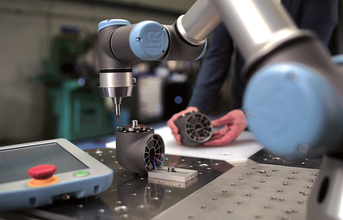
For economic growth of a country, a strong manufacturing industry coupled with maximum productivity is a must, which boosts economic developments and helps develop allied industries that support manufacturing. However, in today's globalised and highly competitive world, the manufacturing industry has to keep reinventing itself to reduce costs by implementing better technology, processes, improving productivity and quality. The production in industries like automobile & electrical assembly and food & packaging, comprises of several processes that require accuracy and precision. A need has risen, for faster output and delivery of these products in the most efficient manner especially as the industry witnesses a rise in product demand and production cost and the lowering of market prices.
The United Nations Industrial Development Organisation (UNIDO) published the Yearbook, which states that in India, the Manufacturing Value Added (MVA) grew by 7.6 percent in 2015 compared to the previous year, which means that production in India has been on a rise and will only continue to do so. As productivity needs to increase, there has been a shift in focus to making the processes more time saving while ensuring consistent quality in output. Thus,
organisations have resorted to taking the aid of collaborative robots or co-bots to
ensure that the procedures are safe and completed with finesse. Hence, there is
a shift from man-made products to collab orative robots or co-bots assisted ones
as the aim is now to reduce or eliminate routine, manual and clerical tasks.
In a human-machine study conducted by MIT researchers at a BMW factory, it was shown that teams comprising of humans and robots were around 85 percent more productive than teams made of either humans or robots working individually. Also, the cooperative process reduced human idle time by virtue of its pace-setting ability. They are also a more affordable option with minimum chances of any injury to the person, who is working alongside them.
(Continued on next page)





































